31 January 2015. Boquete, Chiriqui, Panama. I have never regretted paying a local guide to show me around the best birding spots. I may have gulped a bit at the price, but in the end have never regretted it. Like engaging a skilled tradesman, (a plumber comes painfully to mind) they can do the job better, more efficiently and in one tenth of the time it would take me to barely complete the task.
So today, my first day without Spanish lessons, I hired Jason, a friendly, well informed and English speaking birder, to take me out for half a day of Chiriqui’s best birding. He introduced himself by saying that we were going to visit three good places. I thought, “I’m in your hands Jason. Vamos – lets go!” (Jason Joel Lara can be contacted at jthunder12@hotmail 507 6718 6279)
Birders, occasional birders and informed tourists alike rate the Resplendent Quetzal as the Holy Grail of birds in this part of Panama. Frankly, I wasn’t concerned whether I saw one or not. For me it’s almost always more about the experience, the place and whichever birds make it special one way or another. But still Jason ‘knew’, or believed he knew, that I longed to see quetzals, so off we went.
We made our first stop at “ the Rock-climbing Place” a roadside wall of geometric basalt in a warmly fragrant valley which, when we arrived, was still in early morning shadow. As the sun rose to warm up our side, we found Elegant and Thick-billed Euphonias, diminutive but brightly coloured fruit and seed eaters and members of the finch family. They like to find their food in the dense clusters of mistletoe that plague certain trees and it’s their preference for mistletoe which, with its sticky seeds, helps spread the parasitic plant.
A small group of Gray-headed Chachalacas flew from the still-shady opposite side of the valley and landed not far from us. They moved quietly deep within the tropical tangle and gulped down bright red coffee beans; someone’s homegrown crop. Chachalacas are pheasant-sized birds, one of those species I’d seen pictures of but, being somewhat exotic and tropical, had assumed I’d probably never see. Times change and now I’ve not only seen them but I’ve managed a couple of reasonable pictures, here’s one.
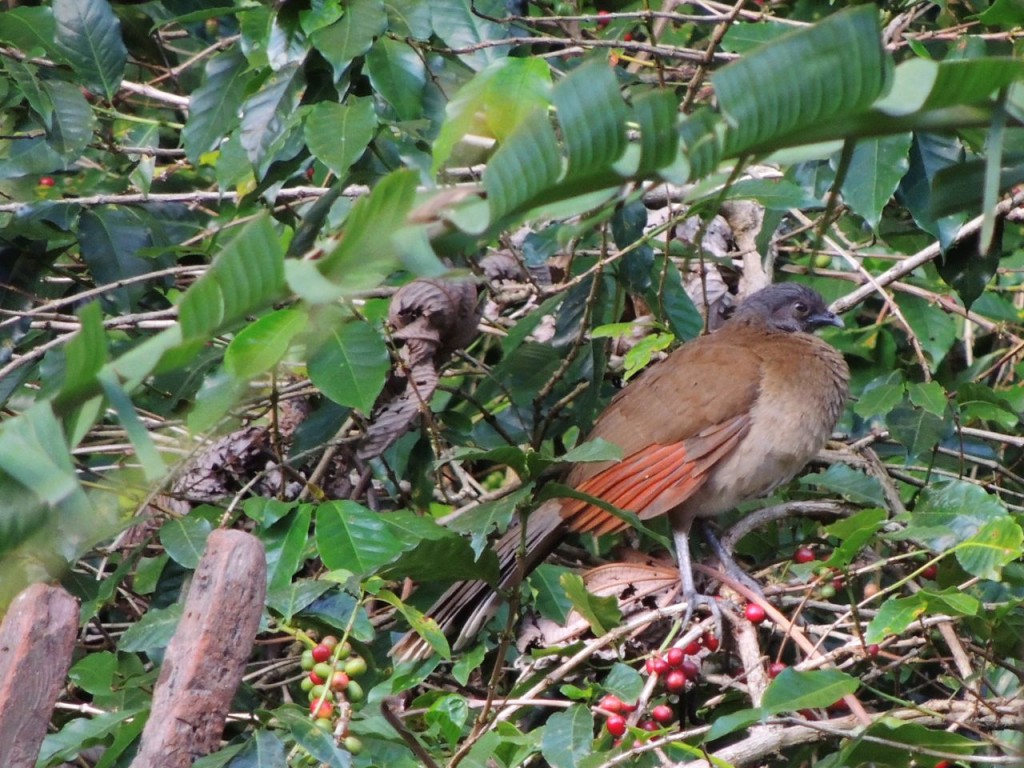
After a brief but unproductive stop at Cascada San Ramon, a noisy, gushing waterfall falling from a notch in the green mountainside, we moved on to the Quetzal Trail. Jason managed to infect me with a sense of Quetzal priority but it took a one or two kilometer hike up a rough and ascending trail to reach their habitat.
I seriously doubt that any casual observer would spot a quetzal unaided. At this time of year they spend the early mornings feeding on the cherry-sized fruit of a species of avocado and then, once full, sit quietly in the deeply shaded mid-canopy of the forest. I had expected them to be another pheasant-sized bird (and therefore somewhat conspicuous) but they turned out to be more magpie size, and very hard to spot. Jason on the other hand, with his years of guiding and experience knew exactly what to look for and where, and soon pointed out a group of males and females sitting quietly digesting breakfast.
Resplendent Quetzals are often described as the most beautiful bird in the world; well, beauty is in the eye of the beholder. There is no question that Resplendent Quetzals deserve the adjective; indeed a dictionary definition of the word resplendent is itself laden with superlatives! The male with his exaggerated iridescent green-blue wing coverts and streaming tail outshines the female, who would be head-turning enough on her own. On the negative side though, our quetzals were very difficult to photograph. Details of the struggles with my camera and the tricks I had to play on it don’t matter; my best efforts are above.
Breath-taking though the quetzals may be, we saw many other wonders. A Two-toed Sloth looking, for all the world, like a ragged nest in the top of a scrawny tree was a surprise and of course stayed obligingly still for a long time; the entire day for all I know. I might have opted for a couple of Squirrel Cuckoos as my Birds of the Day because I like the quirkiness of the cuckoo family as a whole and a Red-headed Barbet was Jason’s bird of the day; they are an uncommon relative of toucans, so I was suitably impressed. I was happy too with a Yellowish Flycatcher that posed quietly for us, I liked it for its cuteness, its contented nature and that it is so closely related to the Least, Willow and Alder Flycatchers that we commonly see here during Ontario’s summer. But it’d be hard to top the quetzals and once found I was convinced; Resplendent Quetzals my Birds of the Day.
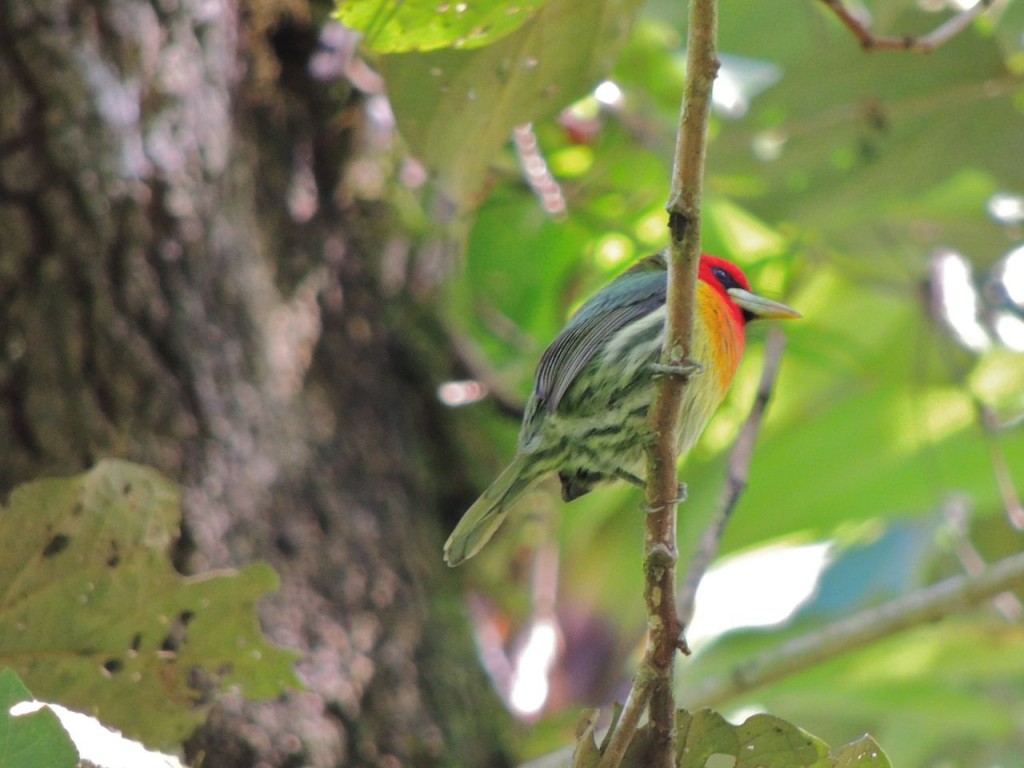
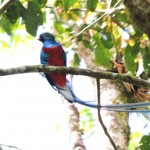
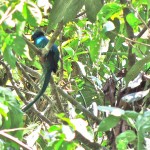
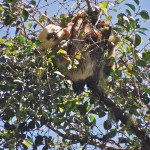
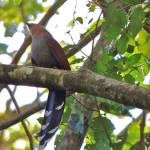
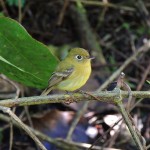
The quetzal sounds like a magnificent bird. I’m glad you were able to see it, along with all the other wondrous sightings. Is its song as beautiful as the bird?
I don’t think the Quetzal utters much more than a series of short, single-note whistles.
All I can say is “Wow!”
Seems like a great day of birding – congrats!!! That barbet is gorgeous. I’m hoping for the Queztal too when I get to Costa Rica next month, but I’m especially looking forward to trying to find a Squirrel Cuckoo. I really want to see them at their antics which gave them their name.